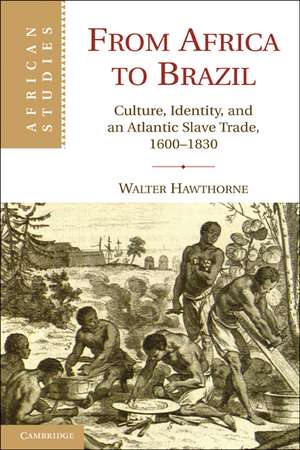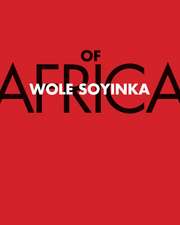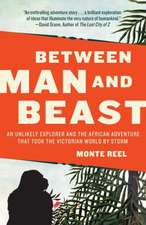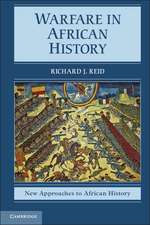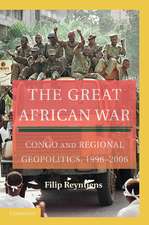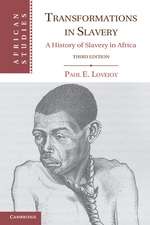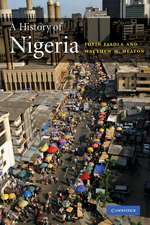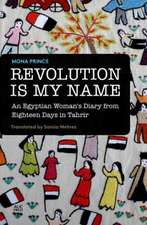From Africa to Brazil: Culture, Identity, and an Atlantic Slave Trade, 1600–1830: African Studies, cartea 113
Autor Walter Hawthorneen Limba Engleză Paperback – 12 sep 2010
| Toate formatele și edițiile | Preț | Express |
|---|---|---|
| Paperback (1) | 205.03 lei 6-8 săpt. | |
| Cambridge University Press – 12 sep 2010 | 205.03 lei 6-8 săpt. | |
| Hardback (1) | 599.14 lei 6-8 săpt. | |
| Cambridge University Press – 12 sep 2010 | 599.14 lei 6-8 săpt. |
Din seria African Studies
-
 Preț: 275.85 lei
Preț: 275.85 lei -
 Preț: 178.45 lei
Preț: 178.45 lei -
 Preț: 177.35 lei
Preț: 177.35 lei -
 Preț: 204.11 lei
Preț: 204.11 lei -
 Preț: 202.11 lei
Preț: 202.11 lei -
 Preț: 223.29 lei
Preț: 223.29 lei -
 Preț: 310.62 lei
Preț: 310.62 lei -
 Preț: 342.31 lei
Preț: 342.31 lei - 11%
 Preț: 696.80 lei
Preț: 696.80 lei - 11%
 Preț: 693.36 lei
Preț: 693.36 lei -
 Preț: 238.11 lei
Preț: 238.11 lei -
 Preț: 177.35 lei
Preț: 177.35 lei -
 Preț: 208.26 lei
Preț: 208.26 lei - 23%
 Preț: 326.14 lei
Preț: 326.14 lei - 15%
 Preț: 459.92 lei
Preț: 459.92 lei - 15%
 Preț: 295.49 lei
Preț: 295.49 lei - 17%
 Preț: 296.11 lei
Preț: 296.11 lei - 18%
 Preț: 1001.24 lei
Preț: 1001.24 lei -
 Preț: 439.78 lei
Preț: 439.78 lei -
 Preț: 446.37 lei
Preț: 446.37 lei - 16%
 Preț: 301.75 lei
Preț: 301.75 lei - 30%
 Preț: 770.26 lei
Preț: 770.26 lei -
 Preț: 110.05 lei
Preț: 110.05 lei -
 Preț: 486.80 lei
Preț: 486.80 lei - 18%
 Preț: 995.09 lei
Preț: 995.09 lei - 18%
 Preț: 703.45 lei
Preț: 703.45 lei -
 Preț: 322.12 lei
Preț: 322.12 lei - 18%
 Preț: 1106.02 lei
Preț: 1106.02 lei -
 Preț: 480.24 lei
Preț: 480.24 lei - 18%
 Preț: 998.56 lei
Preț: 998.56 lei - 21%
 Preț: 182.41 lei
Preț: 182.41 lei -
 Preț: 489.10 lei
Preț: 489.10 lei -
 Preț: 477.72 lei
Preț: 477.72 lei - 25%
 Preț: 853.03 lei
Preț: 853.03 lei - 21%
 Preț: 179.93 lei
Preț: 179.93 lei - 31%
 Preț: 762.16 lei
Preț: 762.16 lei -
 Preț: 321.93 lei
Preț: 321.93 lei - 18%
 Preț: 710.05 lei
Preț: 710.05 lei -
 Preț: 273.50 lei
Preț: 273.50 lei - 16%
 Preț: 311.03 lei
Preț: 311.03 lei -
 Preț: 287.48 lei
Preț: 287.48 lei -
 Preț: 286.69 lei
Preț: 286.69 lei - 11%
 Preț: 694.23 lei
Preț: 694.23 lei - 25%
 Preț: 541.50 lei
Preț: 541.50 lei
Preț: 205.03 lei
Nou
Puncte Express: 308
Preț estimativ în valută:
39.24€ • 42.61$ • 32.96£
39.24€ • 42.61$ • 32.96£
Carte tipărită la comandă
Livrare economică 23 aprilie-07 mai
Preluare comenzi: 021 569.72.76
Specificații
ISBN-13: 9780521152389
ISBN-10: 0521152380
Pagini: 288
Ilustrații: 10 b/w illus. 4 maps 12 tables
Dimensiuni: 152 x 229 x 16 mm
Greutate: 0.4 kg
Ediția:New.
Editura: Cambridge University Press
Colecția Cambridge University Press
Seria African Studies
Locul publicării:New York, United States
ISBN-10: 0521152380
Pagini: 288
Ilustrații: 10 b/w illus. 4 maps 12 tables
Dimensiuni: 152 x 229 x 16 mm
Greutate: 0.4 kg
Ediția:New.
Editura: Cambridge University Press
Colecția Cambridge University Press
Seria African Studies
Locul publicării:New York, United States
Cuprins
Introduction; Part I. The Why and How of Enslavement and Transportation: 1. From Indian to African slaves; 2. Slave production; 3. From Upper Guinea to Amazonia; Part II. Culture Change and Cultural Continuity: 4. Labor over 'brown' rice; 5. Violence, sex and the family; 6. Spiritual beliefs; Conclusion.
Recenzii
'Hawthorne's richly textured discussion makes a valuable contribution to the existing historiography. This is a story that needs to be told.' Linda Heywood, Boston University
'From Africa to Brazil achieves a trans-Atlantic perspective that will serve as a model for those scholars of slavery who are interested in the origins and destinations of enslaved Africans. In connecting the rice-producing regions of the upper Guinea coast with the development of rice cultivation in northeastern Brazil, Hawthorne's majestic study demonstrates the transfer of African technology and culture to one specific region in the Americas in the eighteenth century.' Paul Lovejoy, York University
'Building on his extensive knowledge of Upper Guinea, Hawthorne shows that the majority of slaves arriving into eighteenth-century Amazonia came from a very small area along the coast. As a result, Balanta, Bijago, Papel, and Mandinka were able to recreate a variety of 'Upper Guinean' core beliefs and practices in their new Brazilian homes. Hawthorne convincingly demonstrates the tenacity of Upper Guinean culture in Amazonia; yet his contributions extend well beyond a simple examination of Upper Guineans in the region. Indeed, From Africa to Brazil establishes Hawthorne as an expert on the early history of Maranhão and Pará, regions that are vastly understudied. Particularly impressive in this regard is his treatment of indigenous people and the transition from Indian to African labor. Overall, a deeply researched, important contribution to the study of African diaspora history.' James Sweet, University of Wisconsin, Madison
'Hawthorne's data could take him much further than his core narrative of African re-creation, into describing the formation of a complex colonial culture in the periphery of the colonial world; a radically new culture, not just a survival or a hybrid. In fact, what I liked best about this book is that it provides a lot of information that does not exactly fit its proposed argument, but shows instead the excellent quality of the research.' Journal of Africa
'From Africa to Brazil achieves a trans-Atlantic perspective that will serve as a model for those scholars of slavery who are interested in the origins and destinations of enslaved Africans. In connecting the rice-producing regions of the upper Guinea coast with the development of rice cultivation in northeastern Brazil, Hawthorne's majestic study demonstrates the transfer of African technology and culture to one specific region in the Americas in the eighteenth century.' Paul Lovejoy, York University
'Building on his extensive knowledge of Upper Guinea, Hawthorne shows that the majority of slaves arriving into eighteenth-century Amazonia came from a very small area along the coast. As a result, Balanta, Bijago, Papel, and Mandinka were able to recreate a variety of 'Upper Guinean' core beliefs and practices in their new Brazilian homes. Hawthorne convincingly demonstrates the tenacity of Upper Guinean culture in Amazonia; yet his contributions extend well beyond a simple examination of Upper Guineans in the region. Indeed, From Africa to Brazil establishes Hawthorne as an expert on the early history of Maranhão and Pará, regions that are vastly understudied. Particularly impressive in this regard is his treatment of indigenous people and the transition from Indian to African labor. Overall, a deeply researched, important contribution to the study of African diaspora history.' James Sweet, University of Wisconsin, Madison
'Hawthorne's data could take him much further than his core narrative of African re-creation, into describing the formation of a complex colonial culture in the periphery of the colonial world; a radically new culture, not just a survival or a hybrid. In fact, what I liked best about this book is that it provides a lot of information that does not exactly fit its proposed argument, but shows instead the excellent quality of the research.' Journal of Africa
Notă biografică
Descriere
This book traces the flows of enslaved Africans from the broad region of Africa called Upper Guinea to Amazonia, Brazil.
